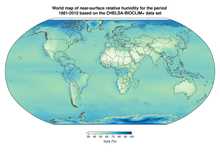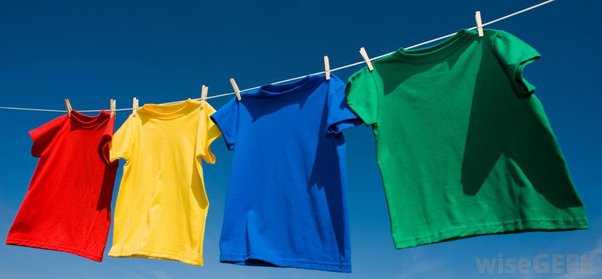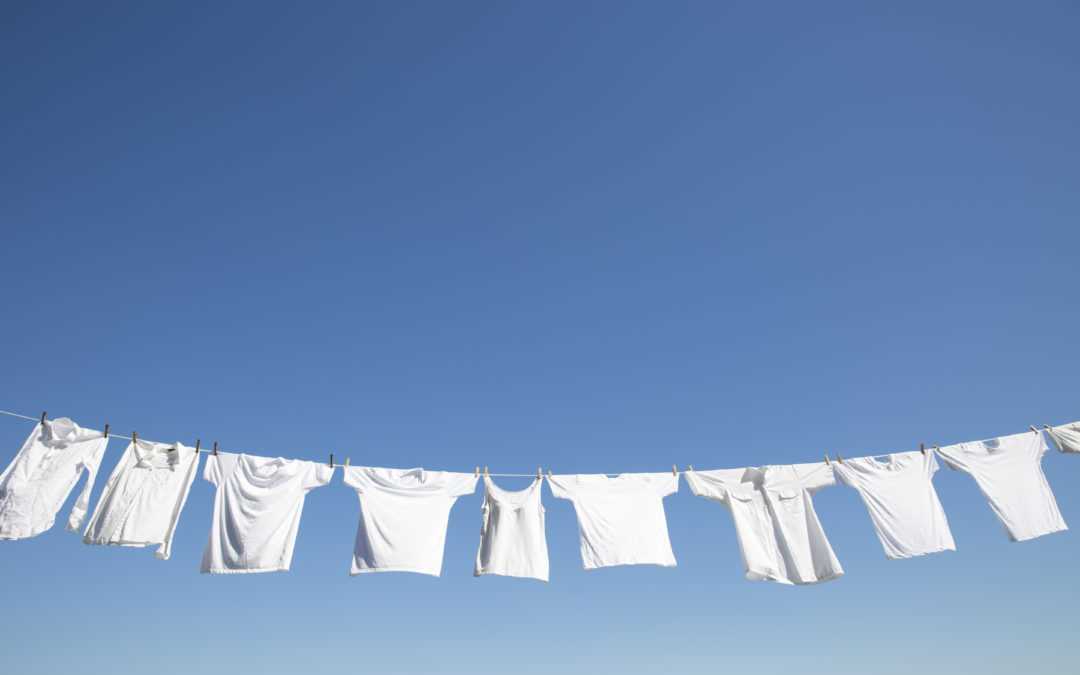




Have you ever wondered if your clothes can dry in high humidity? If you live in an area with consistently high levels of moisture in the air, you may have experienced the frustration of clothes taking longer to dry than usual. It can be especially challenging during the rainy season or in tropical climates where humidity levels can reach as high as 90%. But the question remains, can clothes dry in such conditions?
Humidity refers to the amount of moisture present in the air, and it can have a significant impact on the drying process. When humidity is high, the air is already saturated with moisture, making it more difficult for water to evaporate from your clothes. This can result in clothes feeling damp and taking much longer to dry. However, it is not impossible for clothes to dry in high humidity.
There are a few factors that can affect the drying time of clothes in high humidity. Firstly, the materials of your clothes play a crucial role. Fabrics that are more absorbent, such as cotton or linen, will take longer to dry compared to synthetic materials like polyester or nylon. Additionally, the thickness and density of the fabric can also impact drying time. Thicker fabrics will hold more moisture and may take longer to dry in high humidity.
However, there are some things you can do to help expedite the drying process. One option is to use a dehumidifier, which can help remove excess moisture from the air. This can create a more favorable environment for evaporation to occur, allowing your clothes to dry faster. Another option is to make use of fans or open windows to improve air circulation, which can also aid in drying. If available, you can also take advantage of sunlight, as it can help in removing moisture from clothes.
In conclusion, while drying clothes in 90% humidity may be a challenge, it is still possible with the right techniques. Understanding the factors that affect drying time and implementing strategies to improve evaporation can help you achieve dry clothes even in high humidity. So, the next time you are faced with damp laundry, don’t despair – give these tips a try and enjoy fresh, dry clothes in no time!
Discover the Effects of 90% Humidity on Drying Clothes

When it comes to drying clothes, humidity plays a crucial role in determining how quickly they will dry. In areas with high humidity, such as in places where the humidity level reaches 90%, drying clothes can be a challenge. Let’s delve into the effects of 90% humidity on drying clothes.
1. Extended Drying Time
In high humidity conditions, the air is already saturated with moisture, which makes it difficult for wet clothes to dry effectively. When you hang your clothes in an environment with 90% humidity, the excess moisture in the air slows down the evaporation process. As a result, your clothes will take much longer to dry compared to when drying them in lower humidity conditions.
2. Dampness and Odor
Due to the prolonged drying time caused by high humidity, clothes may end up feeling damp even after being left out to dry for an extended period. The excess moisture in the air can get trapped in the fabric, resulting in a damp sensation. Additionally, the extended exposure to moisture can lead to a musty odor, making your clothes smell unpleasant.
3. Mold and Mildew Growth
High humidity provides the perfect breeding ground for mold and mildew. If you hang your wet clothes in an area with 90% humidity, they are more likely to develop mold and mildew if not dried properly and promptly. Mold and mildew not only damage your clothes but can also pose health risks for individuals with allergies or respiratory problems.
4. Wrinkles and Shrinkage
In high humidity conditions, clothing fibers tend to retain moisture, making them more prone to wrinkling. When clothes take longer to dry, they can become wrinkled and require ironing or additional effort to restore a smooth appearance. Moreover, excessive exposure to moisture during the drying process can cause fabrics to shrink, leading to ill-fitting clothes.
5. Stiff Texture
In 90% humidity, clothes may have a stiff texture after drying. The excess moisture in the air can cause the fibers to clump together, resulting in a rough and coarse feel. This can make it uncomfortable to wear the clothes and may require additional steps, such as using a fabric softener or dryer sheets, to restore a softer texture.
In conclusion, high humidity levels, such as 90%, can significantly affect the drying process of clothes. From extended drying times to the risk of mold growth, the effects are diverse and can be challenging to overcome. If you live in an area with high humidity, it is advisable to explore alternative drying methods or utilize dehumidifiers or air conditioning to create an environment conducive to drying clothes efficiently.
The Impact of High Humidity on the Drying Process

High humidity can significantly impact the drying process of clothes. When the air is filled with moisture, it becomes harder for water to evaporate, making it difficult for clothes to dry properly.
Here are some ways in which high humidity affects the drying process:
- Slower Evaporation: In high humidity conditions, the air is already saturated with moisture, which means there is less room for water to evaporate from wet clothes. This leads to a slower drying process, as the moisture in the air impedes the evaporation of water from the fabric.
- Prolonged Drying Time: Due to the slower evaporation caused by high humidity, clothes take a longer time to dry completely. This can be especially problematic during rainy seasons or in regions with consistently high humidity levels.
- Odor and Mildew: When clothes are not able to dry properly, they can develop an unpleasant odor or even grow mildew. The moisture in the air provides a breeding ground for bacteria and fungi, which can cause these odors and growths to occur.
- Increased Energy Consumption: To compensate for the slower drying process in high humidity conditions, people often find themselves needing to use their dryers for longer periods of time or at higher temperatures. This can result in increased energy consumption and higher utility bills.
- Impact on Indoor Air Quality: When damp clothes are left indoors in high humidity, the excess moisture can contribute to increased humidity levels indoors. This can lead to a muggy and uncomfortable environment, and in severe cases, even promote the growth of mold throughout the home.
Considering these factors, it is clear that high humidity can significantly affect the drying process of clothes. To optimize drying efficiency, it is recommended to use dehumidifiers in the drying area or select a well-ventilated location to dry clothes. Additionally, hanging clothes outside on a sunny and less humid day can help speed up the drying process.
Tips for Drying Clothes in High Humidity
Dealing with high humidity when drying clothes can be a challenge, but with these tips, you can still efficiently dry your clothes even in 90% humidity:
- Choose the Right Time: Try to schedule your laundry for times when the humidity levels are relatively lower, such as in the early morning or late evening. This can help speed up the drying process.
- Utilize Air Circulation: Ensure that there is proper air circulation in the drying area. You can use fans or open windows to improve air flow, which helps to reduce the drying time.
- Pick the Right Spot: Find a location that is well-ventilated, preferably outdoors if possible. Hanging clothes outside allows them to benefit from natural airflow and sunlight, which can help combat high humidity.
- Use Dehumidifiers: Consider using dehumidifiers in the drying area to reduce the overall humidity level. Dehumidifiers extract moisture from the air, helping your clothes dry faster.
- Separate Damp and Dry Clothes: Keep damp clothes separate from dry clothes during the drying process. Keeping them together can increase the overall humidity, making it more difficult for the clothes to dry effectively.
- Opt for Thin and Lightweight Fabrics: Choose clothing made from lightweight and breathable fabrics. These types of materials tend to dry faster compared to heavy fabrics, even in high humidity.
- Remove Excess Water: Before hanging your clothes to dry, gently wring them out to remove as much excess water as possible. This step can significantly speed up the drying process, especially in high humidity.
- Utilize Indoor Drying Methods: If outdoor drying is not an option, try utilizing indoor drying methods. Use a drying rack or clothesline in a well-ventilated room, preferably near a window or with a fan for better air circulation.
By following these tips, you can overcome the challenges of high humidity and ensure your clothes dry efficiently and effectively.
How to Speed Up the Drying Process in Moist Conditions

If you find yourself in a high humidity environment and need to dry your clothes quickly, there are a few steps you can take to speed up the drying process.
1. Choose the Right Fabric
When dealing with high humidity, it is important to choose fabrics that are lightweight and quick-drying. Fabrics such as polyester, nylon, or microfiber are great options as they have moisture-wicking properties and dry faster than heavier fabrics like cotton.
2. Use a Dehumidifier
A dehumidifier can help remove excess moisture from the air and create a more ideal drying environment. Place the dehumidifier near the drying area to speed up the evaporation process.
3. Increase Airflow

Improving airflow around the drying clothes can help accelerate the drying process. You can achieve this by using a fan, opening windows, or hanging the clothes outside if the weather permits.
4. Hang Clothes Properly

Ensure that the clothes are hung properly to allow maximum airflow. Use hangers or clotheslines to hang the clothes rather than folding them or laying them flat. This will increase the exposed surface area and improve airflow, aiding in faster drying.
5. Utilize Absorbent Materials

Place absorbent materials, such as towels or dry bath mats, underneath the drying clothes. These materials will help absorb excess moisture and prevent it from being reabsorbed by the clothes, allowing them to dry faster.
6. Increase the Temperature
If possible, increase the temperature in the drying area. Warmer temperatures can help speed up the evaporation process and promote faster drying. You can achieve this by using heaters or adjusting the thermostat.
7. Separate the Clothes
Do not overcrowd the drying area with too many clothes. Instead, separate the clothes to ensure there is enough space for air to circulate between them. This will allow for better airflow and quicker drying times.
8. Monitor Humidity Levels
Keep an eye on the humidity levels in the drying area. If the humidity remains high despite your efforts, consider using a hygrometer to monitor the levels accurately. This will help you make any necessary adjustments to further speed up the drying process.
By following these tips, you can help speed up the drying process in moist conditions and ensure that your clothes are dry and ready to wear in no time.
Choosing the Right Fabrics for Humid Environments
In humid environments, it is important to choose fabrics that will allow your clothes to dry properly and stay comfortable. Here are some fabrics that are suitable for humid climates:
Cotton
Cotton is a natural fabric that is lightweight and breathable, making it ideal for humid environments. It absorbs moisture quickly and dries relatively fast, keeping you cool and comfortable. However, cotton can wrinkle easily, so it is important to iron or steam your clothes to maintain a neat appearance.
Linen
Linen is another natural fabric that is excellent for humid climates. It has high moisture-absorbing properties and allows air to flow through, making it a cool and breathable option. Linen also dries quickly and has a natural resistance to bacteria and mildew. However, it tends to wrinkle easily, so you may need to iron or steam your linen clothes.
Rayon
Rayon is a synthetic fabric that is made from cellulose fibers. It is lightweight, breathable, and quick-drying, making it suitable for humid environments. Rayon has a smooth and silky texture, and it drapes well, giving your clothes an elegant look. However, it can shrink if not properly cared for, so it is important to follow the care instructions when washing and drying rayon clothes.
Polyester
Polyester is a synthetic fabric that is known for its durability and resistance to wrinkles. It does not absorb moisture as well as natural fabrics, but it wicks away moisture from the skin, keeping you dry and comfortable. Polyester dries quickly and is easy to care for, making it a practical choice for humid environments.
Nylon
Nylon is a synthetic fabric that is lightweight, durable, and quick-drying. It has good moisture-wicking properties and is resistant to mildew and bacteria. Nylon is often used in activewear and outdoor clothing due to its moisture management capabilities. However, it may not be as breathable as natural fabrics, so it is important to choose nylon clothes with proper ventilation.
When choosing fabrics for humid environments, prioritize breathability, moisture-wicking properties, and quick-drying capabilities. It is also important to consider the specific requirements of the garment, such as care instructions and wrinkle-resistance. By selecting the right fabrics, you can ensure that your clothes stay comfortable and dry, even in high humidity.
Common Myths Debunked: Can Clothes Really Dry in 90% Humidity?
There has always been a debate about whether clothes can dry in high humidity conditions. Some believe that clothes cannot dry effectively in high humidity, while others argue that it is possible. Let’s take a closer look at this common myth and debunk it once and for all.
Understanding Humidity
Humidity refers to the amount of moisture or water vapor present in the air. It is commonly measured as a percentage. For example, a humidity level of 90% means that the air is holding 90% of its maximum water vapor capacity.
The Drying Process
Drying clothes involves the evaporation of water from the fabric. When clothes are wet, the water molecules within the fabric absorb the heat from the surroundings, causing them to gain energy and eventually transform into a gaseous state and evaporate.
The Myth of High Humidity Hindering Drying
Contrary to popular belief, high humidity alone does not prevent clothes from drying. While it is true that high humidity reduces the rate of evaporation, it does not completely hinder the drying process.
In high humidity conditions, the air is already saturated with moisture, making it less able to absorb additional moisture. This means that the rate of evaporation is slower compared to low humidity conditions. However, drying clothes in high humidity is still possible, albeit at a slower pace.
Factors That Impact Drying
Although high humidity may slow down the drying process, other factors come into play when determining how long it takes for clothes to dry:
- Temperature: Higher temperatures facilitate faster evaporation.
- Airflow: Proper airflow promotes quicker drying by aiding in moisture evaporation.
- Drying Method: Different drying methods, such as line drying or using a dryer, can affect the drying time.
- Fabric Type: Certain fabrics, such as cotton, dry faster than others, like wool or denim.
Conclusion
In conclusion, the myth that clothes cannot dry in 90% humidity is debunked. While high humidity can slow down the drying process, it does not completely prevent clothes from drying. With adequate temperature, airflow, and drying methods, clothes can still dry effectively even in high humidity conditions. So next time you need to dry your clothes on a humid day, rest assured that they will eventually dry.
FAQ
Can clothes dry in high humidity?
Yes, clothes can still dry in high humidity, although it may take longer. The moisture in the air slows down the evaporation process, making it harder for the clothes to dry completely.
How long does it take for clothes to dry in 90% humidity?
Clothes may take significantly longer to dry in 90% humidity compared to drier conditions. It can take several hours or even a full day for clothes to fully dry in such high humidity.
What can I do to help clothes dry faster in high humidity?
There are a few things you can do to help clothes dry faster in high humidity. Firstly, make sure you have good airflow by using a fan or opening windows. You can also use a dehumidifier to reduce the moisture in the air. Additionally, hanging clothes outside on a sunny day can help speed up the drying process.
Are there any specific fabrics that dry faster in high humidity?
Certain fabrics, such as synthetic materials like polyester or nylon, tend to dry faster in high humidity compared to natural fibers like cotton or wool. Synthetic fabrics have less absorbency, so they are less affected by the moisture in the air, allowing them to dry more quickly.
Is it bad to leave clothes outside to dry in high humidity?
Leaving clothes outside to dry in high humidity can be less effective and may prolong the drying time. The clothes may also develop an unpleasant odor due to the moisture in the air. It’s best to find alternative methods, such as using a dryer or finding a well-ventilated indoor area, to ensure proper and timely drying of the clothes.
Can clothes dry in high humidity?
Yes, clothes can still dry in high humidity, although it may take longer than in drier conditions. The high humidity in the air slows down the evaporation process, making it more difficult for the clothes to dry quickly.
















